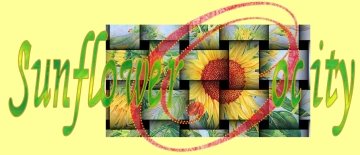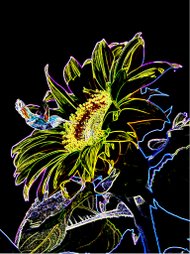Most so called “house plants” have low light requirements and can generally be grown indoors without additional lighting. Where things get a little more complicated is when vegetable and fruit producing plants are added to the indoor garden, or even some outdoor areas. These plants require more light for optimal growth and production. It is important to be able to estimate the amount of light needed for growing each type of plant and the lighting options available for replacing or supplementing natural sunlight for indoor or greenhouse gardening. The use of an inexpensive light meter and a general understanding of plant lighting terminology will help lead to successful garden light management.
A quick search on the internet for “indoor plant light requirements” will provide many sources and most of them will give the same or close to the same requirements. These requirements are not for general house plants, but for their light hungry cousins that are more commonly grown outside. Most charts, like the one below, give a recommended coverage for a particular watt light used as both an exclusive lighting source and when supplemented with some natural sunlight.
Light Size Estimates for Growing Fruits and Vegetables Indoors
Watts Coverage With Sunlight
250 3' x 3' 4' x 4'
400 4' x 4' 6' x 6'
600 5' x 5' 7' x 7'
1000 7' x 7' 11' x 11'
Given these general guidelines for the area that can be covered by a particular watt light, it is important to provide the proper type of light that plants need. There are three main types of lights available for growing plants. The three types are: metal halide, high pressure sodium and MH/HPS dual spectrum lights.
Metal halide and High Pressure Sodium Lights
Metal halide lights produce a strong output of blue spectrum light which will result in strong vegetative growth. These lights produce enough red spectrum light for plant production, but the amount of red spectrum light they produce is not optimal for flowering and fruiting. It is for this reason that many indoor growers switch from metal halide to high pressure sodium lights once plants enter the flowering and fruiting stage, because these lights produce high output in the red spectrum. Another option is to use both metal halide and high pressure sodium lights, but using dual spectrum lights may be more practical.
MH/HPS Dual Spectrum Lights
The third type of light available, MH/HPS dual spectrum lighting, combines the advantages of both the metal halide and high pressure sodium bulbs in one lighting system. This is an innovative system and will produce great results throughout all growth cycles. One disadvantage is that these lights can be expensive, but with prices coming down and the need to only purchase one set of bulbs rather than two, price may not be as big an issue as it once was. It could, however, be argued that using metal halide lighting and switching to high pressure sodium bulbs for the flowering and fruiting stage gives plants more of precisely the light they need during both the growth and flowering and fruiting stages. The following links may be helpful in locating high quality MH/HPS Dual Spectrum Lights:
http://www.bghydro.com/BGH/items.asp?Cc=DS
http://www.specialty-lights.com/5915.html
http://www.hydroempire.com/store/index.php/cPath/3_21
A Light Meter is a Good Gardening Investment
Charts like the one above are helpful for estimating light requirements for a given indoor space where artificial light is the exclusive light source for the garden. For outdoor gardens, greenhouses and indoor spaces where some natural light is available it is beneficial to have a light meter to more precisely measure light and make adjustments accordingly. Light meters are available starting at around $20 and can be used to pick good ornamental house plants for any given location in the house, as well as to estimate additional lighting needs for high light plants including most fruits and vegetables.
Some of these meters come with lighting suggestions for many popular plants to help identify the best light level. The following links will be helpful in comparing brands and prices:
http://www.hhydro.com/cgi-bin/hhydro/LIGHT_METER.html
http://www.planetnatural.com/cgi-bin/planetnatural/grow-light-meter
http://www.growlightsource.com/catalog/product_info.php?products_id=725
http://wardsci.com/product.asp?pn=IG0013396&sid=mercent&mr:referralID=b235845b-ed9f-48d3-b738-5ee8a2bf9462
http://www.lusterleaf.com/Environmental%20Monitoring/pages/1870.html
The choices available for indoor plant lighting can be daunting, but the following steps can help one to zero in on the best system for a particular application:
1. Use the chart above to estimate the total wattage of light for the size of garden space. Use the links provided in this article, or find others by doing an internet search on “grow light”, and compare prices based on the watts needed. Consider three options: a) Metal halide lights with fixtures and ballasts and high pressure sodium conversion bulbs of the same size to switch to for the flowering and fruiting stage. When using standard bulbs you can only match the same type of bulb to the same type of ballast. Make sure to buy what is called a conversion bulb. This is a special bulb that will operate on the opposite type of ballast and can be purchased in all three bulb types b) Split the wattage evenly between metal halide and high pressure sodium lights. c) MH/HPS dual spectrum lights.
2. Invest in an inexpensive light meter. Use it to check the light level of all gardens that do not receive full sun, including greenhouses, patios and other shaded areas. The meter will be particularly helpful in selecting indoor plants based on available light for various areas of the house and measuring light to adjust the artificial light provided to indoor gardens.
3. Any light bulb will loose brightness over time. Metal Halide lamps will lose about 25% of their lumen output after a year of continual use. High pressure sodium bulbs last about twice as long and dual spectrum lights are between the two. Each bulb type is generally replaced at one year, 18 months and two years respectively. Alternatively, they may be used longer if more light is added to the garden to make up for the lost lumen output. A light meter is invaluable in determining how light output from a system has changed over time and making adjustments or bulb replacements accordingly.
How Many Hours Daily Light are Optimal?
Botanists classify plants into three categories concerning their reaction to hours of light. Some plants are classified as “short day” plants and will not flower unless they receive less than 12 hours of light each day. Examples of these plants are Christmas cactus, chrysanthemums and poinsettias. Some vegetables including tomatoes, corn and cucumbers are classified as “day neutral” plants because they will flower regardless of the number of hours of light received each day. Most of these “day neutral” plants will however perform best if given a relatively long day of 18 or so hours of light. Many summer blooming flowers and garden vegetables are classified as “long day” plants. Lettuce, spinach and potatoes are in this category. These and other long day plants all bloom when the night cycles are short.
Some plants are not classified as strictly "short day", but will perform best with 12 to 14 hour days. Most lettuces, herbs, broccoli, cauliflower, snow peas, chard and other spring and fall crops fall into this category. For indoor gardens containing a mixture of plants it is best to use around 14 hours of light each day. This will be short enough for the above mentioned plants to do well and long enough to keep the “day neutral” and “long day” plants that prefer a longer day producing. If these light lovers can be grown separately, give them a full 18 hours of light each day for maximum results.
Understanding the Terms Full Sun, Part Shade and Full Shade
Plants labeled as requiring full sun do not actually require direct sun all day long. Full sun means that the plant need at least six hours of direct sunlight each day and preferably including noon sun as part of this. Part shade plants require three to six hours of direct sun each day and preferably not direct sun during the intense mid day. Full shade plants do well on less than three hours of low intensity morning or late afternoon sun each day.
This information and an inexpensive light meter will help in making good lighting decisions to successfully manage light for both indoor and outdoor gardens.
Subscribe to:
Post Comments (Atom)



No comments:
Post a Comment